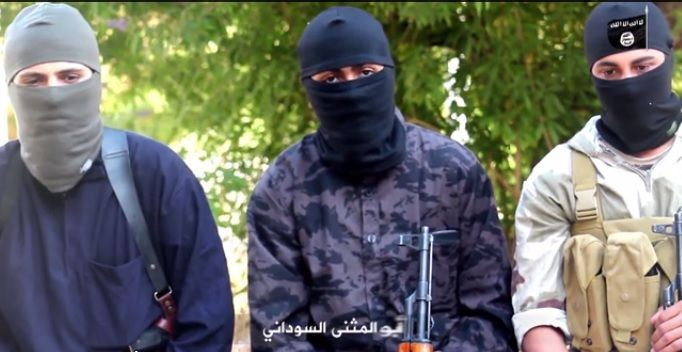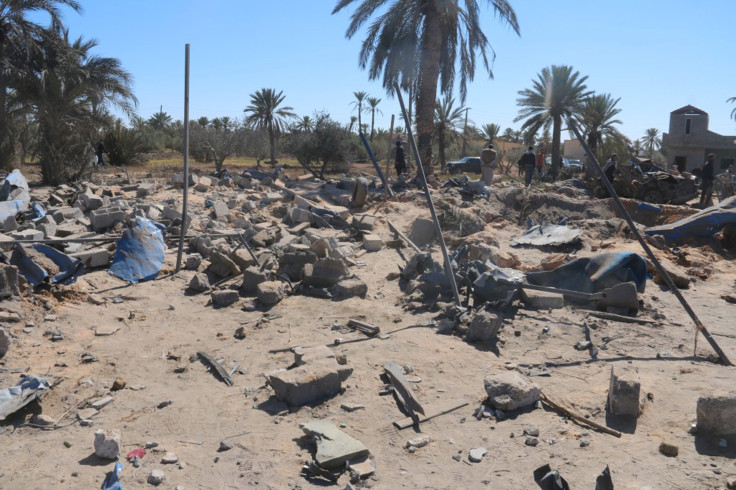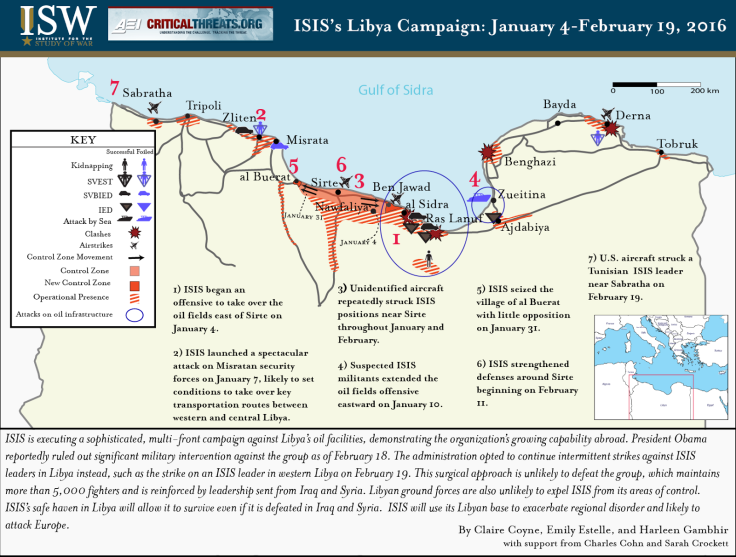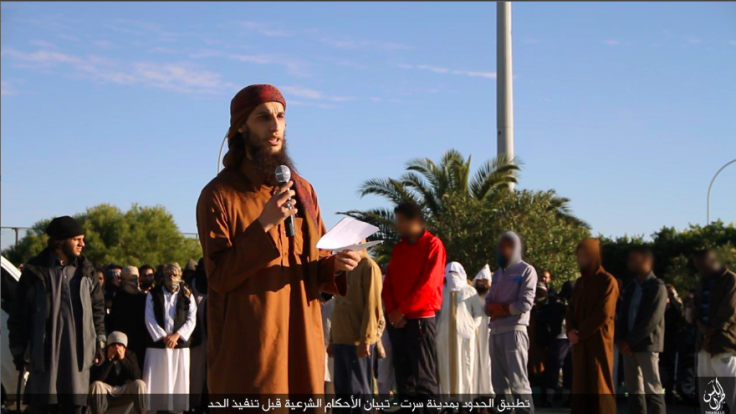Biggest ISIS Threat To Europe Now Comes From Libya, Not Syria And Iraq

BEIRUT — Since the rise of the Islamic State group, Western powers have focused their fight against it on Iraq and Syria, but that’s changing as the extremist organization spreads farther west. American forces carried out their first airstrikes of this year on one of the militant group’s bases in Sabratha, Libya, Friday. A Tunisian leader of the group also known as ISIS or ISIL and two Serbian Embassy workers who had been kidnapped by the extremist organization were among the 49 fatalities in the northwestern coastal city.
The U.S. decision to strike ISIS targets in Libya, which the Pentagon described as a matter of national security, underscores the extent of the militant group’s expansion in terms of both members and territory during the past six months. ISIS in Libya — basically southern Europe’s backyard — is proving to be a bigger threat than the group’s branches in Iraq and Syria. The North African country has become a hub for European foreign fighters who are either unable or unwilling to travel to Iraq or Syria and who, on returning to their European homes, plan further atrocities.
“ISIS’ safe haven in Libya will allow it to survive even if it is defeated in Iraq and Syria,” according to a report by the Institute for the Study of War. “ISIS will use its Libyan base to exacerbate regional disorder and attack Europe.”

Libya has been in the throes of a chaotic civil war since the fall of dictator Moammar Gadhafi five years ago. With two rival governments struggling to control the country’s political sphere and its vast oil fields, militant groups and terrorist organizations such as ISIS have capitalized on the nation’s environment of lawlessness.
“Conflict zones and failed states necessarily attract violent extremists — and Libya is the perfect candidate for a new safe haven for jihadist fighters. The phenomenon of foreign fighters has enhanced this threat, as young extremists are provided with an ideal destination for waging violent jihad,” according to a report by the Soufan Group, an intelligence and risk consultancy.
“Given geography, expansive territory, extensive oil reserves and its history with violent jihadist networks, a failed state in Libya could be disastrous for North Africa and Europe, as well as the broader international community,” the consultancy reported.
The conflict in Libya has made it difficult to obtain up-to-date data on Libyan foreign fighters, but last year about 600 Libyans traveled to fight in Iraq and Syria with some 6,500 ISIS fighters in Libya now, according to several U.S. intelligence officials who spoke to CNN. Libyan nationals are in the minority of fighters, meaning that the majority are either new recruits from foreign countries or veterans who have fought in Iraq and Syria.
Libya used to be a popular stopover for European and North African fighters hoping to make it to Iraq and Syria: After entering the country, fighters would rent a house for several days until they made their way to Turkey and crossed illegally into Syria, according to an ISIS propaganda book obtained by International Business Times that instructs fighters how to reach the so-called caliphate. In some cases, training also took place in Libya ahead of journeying to ISIS-controlled territory.
Since mid-2015, however, Libya has become a major destination for ISIS fighters in its own right. IBT recently obtained a document from an ISIS supporter in Libya listing a number of specialists the group was looking to recruit to the country, including engineers, explosive experts, oil and gas workers, and physicists.

“It’s one of the first cases of Europeans going to Libya instead of directly going to Syria, and I think we might see more of that in the future, particularly as it becomes harder to get to Syria,” Harleen Gambhir, counterterrorism analyst at the Institute for the Study of War, told IBT. “ISIS has terrain it controls [in Libya]. The caliphate exists there, too.”
But ISIS fighters in Libya “don’t want to carry out attacks inside Libya, and they really haven’t done that,” Jason Pack, an analyst at Libya-Analysis.com, told the Voice of America. “What they do want to do is to keep the Libyan government weak, and that’s the reason they have targeted assassinations against key Libyan government officials.”
The advantages of the country’s proximity to Europe are not lost on the militant group. In an interview published in Dabiq, the ISIS online propaganda magazine, Libyan ISIS leader Abul-Mughirah al-Qahtani said, “The control of the Islamic State over this region will lead to economic breakdowns, especially for Italy and the rest of the European states.”
But the militant group still has a long way to go before it can call Libya its own, let alone realize its deadly ambitions in Europe. The legion of foreign fighters ISIS has imported into Libya has not always gone down well with local extremists. In mid-2014 a prominent jihadi in the coastal city of Derna pledged allegiance to ISIS leader Abu Bakr al-Baghdadi, but since then other militants have rejected the group’s presence.

However, ISIS has succeeded in expanding the territory it holds in other areas of Libya, including Tripoli and Sirte, home to the largest air base in Libya and several of the country’s major oil facilities.
It is this expansion that has the U.S. and its European allies concerned. In November, a U.S. attack targeted and killed an ISIS leader in Libya for the first time. In a statement confirming the militant’s death, the Pentagon’s press secretary said the strike “demonstrates how far we will go after [ISIS] leaders wherever they operate.”
© Copyright IBTimes 2024. All rights reserved.












